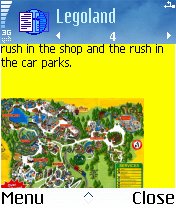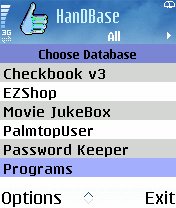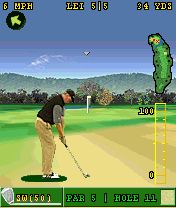The year is 2001 and the Nokia 7650 has just been launched, the world's first Series 60 smartphone. I'd been using the Nokia 9210i Communicator, but its lack of RAM, relative paucity of software (this was before OPL had been released for it) and bulk meant that I wasn't incredibly attached to it. I took a look at 7650 and Series 60 but dismissed the PIM applications are extremely poor, bemoaning for the umpteenth time that Symbian's trademark applications hadn't all made it across to the new platform. In addition, there was almost no storage memory and no expansion card. And, of course, very little third party software (being a new platform). In short, I dismissed Series 60 from my mind as an underpowered, simplistic platform.
Instead, my eye was caught by Handspring and their Palm OS-powered Treo 270. Having previously used a Palm III for a while, I knew I liked the easy synchronisation, interface and power of Palm's applications, plus there was a huge catalogue of add-on programs, from office suites to utilities to games. To get all this with Symbian-like telephony included seemed too good to miss and I plumped up for the Treo. I wasn't happy at heart though, if only because I knew that, back in the Symbian world there was the possibility of real multi-tasking and doing 'proper work'.
With a view to getting back into the current (2003) 'cutting edge' of the Symbian world, I snapped up one of the earliest UIQ-interfaced Sony Ericsson P800s, followed fairly quickly by the newer P900. The form factor was right, the design was generally excellent and it was great to have a camera on board and stereo music blasting into my ears, even if that silly 128MB limit on the expansion cards did limit what could be carried around. But, gradually, the cardinally stupid 'return to base state' behaviour of all UIQ applications began to really annoy me, and I never really got on with having to extract the stylus just to input a few characters.
 Hallalujah! [FX:heavenly choirs] Nokia put everyone out of their misery with the announcement of the Nokia 9500, a single keyboarded Communicator device with oodles of RAM, oodles of flash memory, all the built-in applications I used to know and love, plus a VGA camera, stereo music output and support for 1GB MMC cards. This was the device that I had been waiting for, for the last five years. By now, OPL had been finished for the Series 80 platform and I could program away on my handheld, just as in the days of Psion, plus others could run my programs with a simple runtime. The extra comms capabilities (Wi-Fi, Bluetooth, GPRS) were also vital in establishing the 9500 as the businessperson's communications device. And quite right too.
Hallalujah! [FX:heavenly choirs] Nokia put everyone out of their misery with the announcement of the Nokia 9500, a single keyboarded Communicator device with oodles of RAM, oodles of flash memory, all the built-in applications I used to know and love, plus a VGA camera, stereo music output and support for 1GB MMC cards. This was the device that I had been waiting for, for the last five years. By now, OPL had been finished for the Series 80 platform and I could program away on my handheld, just as in the days of Psion, plus others could run my programs with a simple runtime. The extra comms capabilities (Wi-Fi, Bluetooth, GPRS) were also vital in establishing the 9500 as the businessperson's communications device. And quite right too.
Yet, only seven months later, a glance at my hip will show you a Series 60-powered Nokia 6630. What on earth happened to the 9500 and how come I'm using a platform I was so dismissive of four years ago? Well, the 6630's Megapixel camera had something to do with it, it's true. Once you've seen your daily snaps (and with a young family, there are a lot of these) with four times the number of pixels, it's very hard to go back. But there's another reason, and it's not to do with the relative sizes (size isn't that important to me, since my devices tend to stay on my hip).
It's all about software. To a small extent it's about the built-in software within (take a deep breath) Series 60 version 2, Feature Pack 2 devices (now you know why sites tend to stick to quoting simple model numbers!) - Series 60 has come a long way from those early Nokia 7650 beginnings. The PIM applications are slicker, the interface has been tweaked and optimised, and the underlying Symbian Operating System (v8.0) is much more powerful and robust.
But THE main reason why it's the 6630 that's staying with me every day is that there's now a critical mass of top notch software that just isn't available for the Communicator. Software like iSilo, which lets me archive web pages and HTML file sets. HanDBase, which lets me keep all my business data on both PC and smartphone. And games, games, games galore. I'm not a big PC gamer, but I absolutely love snuggling down with my smartphone in odd moments and knocking down a round of bowls in Bowling Master, or trying to achieve a lowest under-par round in Golf Pro Contest. Or spending time with any one of the dozens of quality games.
And of course the killer applications for Series 80, such as OggPlay (for music) and TomTom Mobile 5 (for navigation) are also available for Series 60 and installed on my 6630.



iSilo, HanDBase and Golf PRO Contest, three of the newest stars in the Series 60 world
Text input was always a concern of mine, preventing me from giving 'predictive' input on a numeric keypad the time of day, but now I've learnt some of the tricks, I find I can knock out up to 20 words per minute fairly easily (compared to about 30 on the 9500's keyboard). And, for those occasions when speed is of the essence (like writing this article), I reach for my Bluetooth keyboard and I'm connected in a couple of seconds.
Do I still think Series 60 is underpowered and simplistic? No, but I still hanker for notes on Calendar entries and more than one To-do list, all synced nicely to Outlook. Is this too much to ask for, Nokia and Symbian? And I'd really, really, really, really, love someone to find a way to get the OPL runtime working properly on Symbian OS 8 so that I and other OPL stalwarts can start converting over the large number of OPL programs from the rest of the Symbian world.
My 9500 isn't exactly gathering dust these days, it's too good a unit to be left alone for long. But when I leave the house it's my sleek black 6630 that comes along with me. And, for the moment, I'm pretty happy with the arrangement.
For me, it really was all about the software. There's enough now for modern Series 60 smartphones that there's very little need to look elsewhere.
Steve Litchfield, Sept 2005
3lib.ukonline.co.uk
